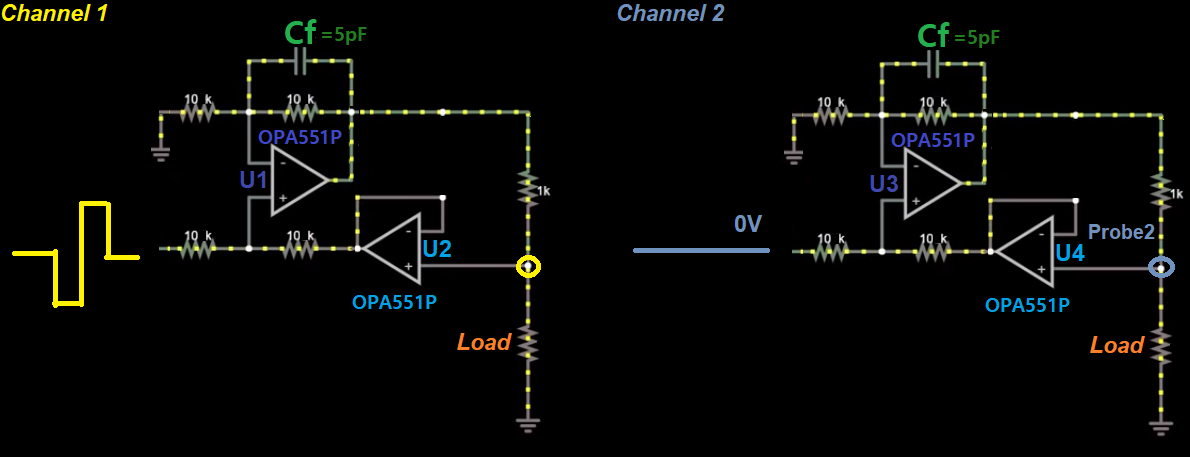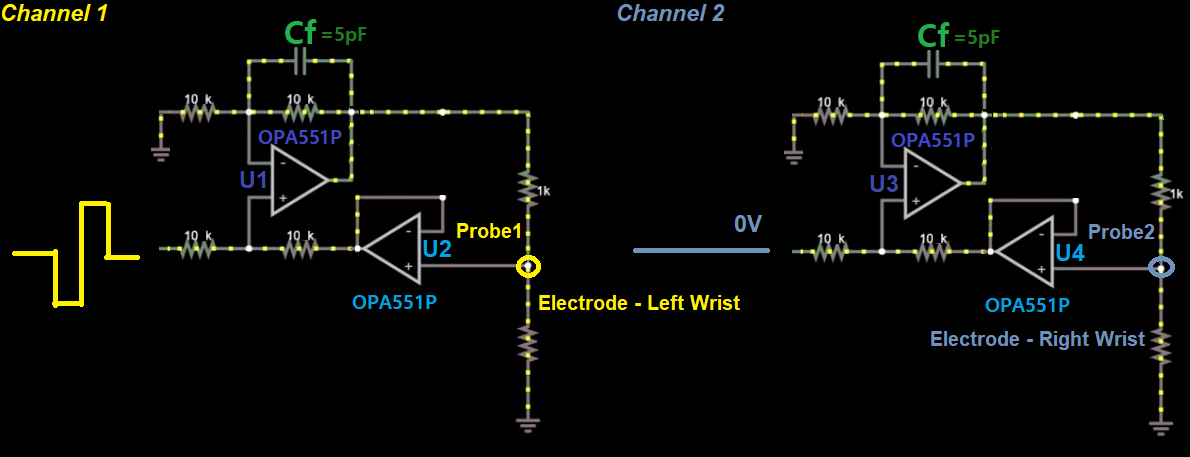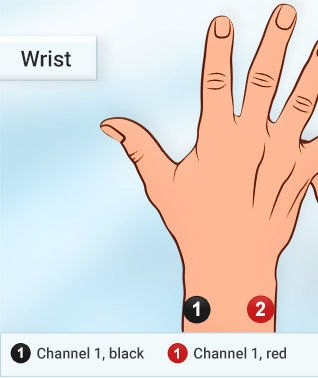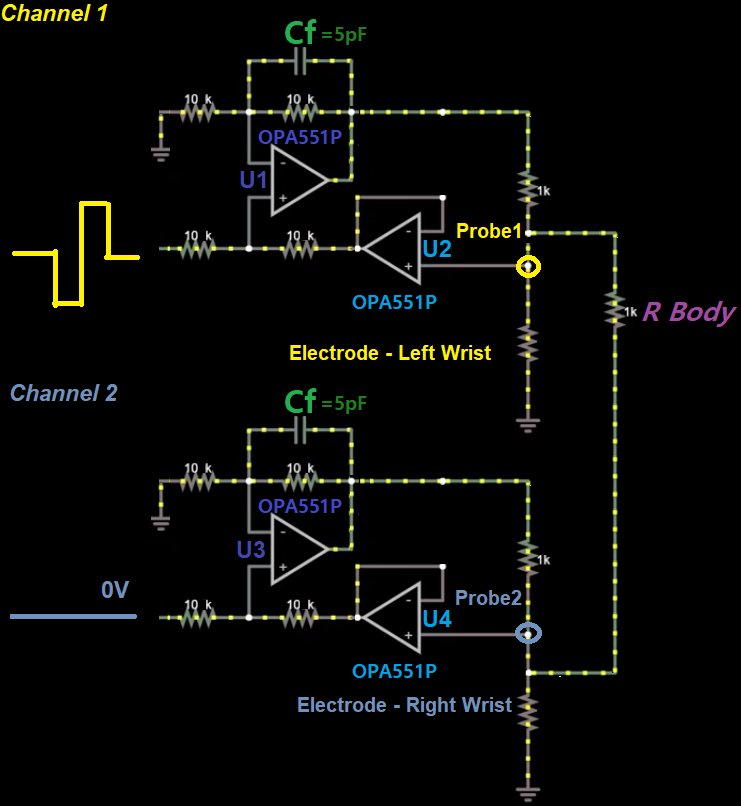Hi, guys.
I'm using the application note
http://www.ti.com/lit/an/snoa474a/snoa474a.pdf
to create the Howland Current Pump with OPA551
I'm using two current pumps.
Case 0) When each load is resistors.
When I use 1k Ohm as a load for each current pump, the expected output is shown from the oscilloscope.
Case 1) When wrist becomes a load - I have an IRB approval
I use four H124SG Covidien electrodes. The connections are
A: Left Wrist position 2 (red) - Oscilloscope Probe 1 - Current pump 1 (U2's positive input pin)
B: Left Wrist position 1 (black) - Probe 1 aligator clip - GND
C: Right Wrist position 2 (red) - Oscilloscope Probe 2 - Current pump 2 (U4's positive input pin)
D: Right Wrist position 1 (black) - Probe 2 aligator clip - GND
This is the output.
There should be nothing on channel 2 (show 0V). Surprisingly, a similar looking output is generated to channel 2, "a mirrored output".
One surprising observation;
If I remove the connection between the second current pump and my right wrist (position 2, C),
probe 2 shows that U4's positive input shows negative voltages like -10V.
Although the human wrist is not purely resistive, this is interesting to discover to observe a negative voltage when both wrists are connected to the electrode.
- May I ask why this negative voltage is observed?
- I mentioned "mirrored output". How can I solve this in order not to make a mirrored output?
I'm going to use the current pumps alternatingly (use the left pump for 1 second -> stop that and use the other one for 1 second ->...)
or simultaneously (the left pump gives 0.1mA at 100Hz / right pump gives 0.05mA at 200Hz).
However, this mirroring phenomenon cannot make me do that. I deeply appreciate your help, please.





